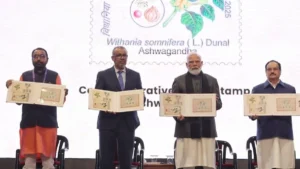In a collaborative project involving researchers from Kerala University and various other institutions, a significant archaeological excavation has revealed a 5,200-year-old Harappan settlement at Padta Bet, near Khatiya village in Kachchh district, Gujarat. Led by assistant professors Abhayan G.S. and Rajesh S.V. from Kerala University’s Department of Archaeology, the expedition uncovered crucial evidence shedding light on the cultural formation of Early Harappan settlements in the region.
Discovery and Significance
The excavation unearthed evidence of a Harappan settlement dating back to circa 3200 BCE to 1700 BCE, including circular and rectangular structures made of locally available sandstone and shales. Unique pottery traditions, semi-precious stone beads, terracotta spindle whorls, copper, lithic tools, and animal bone fragments were among the finds. The site’s strategic location atop a hillock, overlooking a valley and with access to a nearby stream, suggests its significance in Harappan urban planning and resource management.
Insights and Implications
The presence of novel pottery types suggests a local pottery tradition within the Harappan civilization previously unidentified. The discovery provides insights into the cultural and economic exchanges among Harappan settlements and their adaptation to diverse environmental settings. The identification of animal domestication and shellfish exploitation indicates the inhabitants’ subsistence strategies and lifestyle.
Collaborative Research Endeavor
The excavation project involves collaboration with institutions such as the Catalan Institute of Classical Archaeology, Spanish National Research Council, Albion College, Texas A&M University, and others. This collaborative effort enhances the interdisciplinary study of the Harappan civilization, enriching our understanding of ancient urban societies and their interactions.




 Prime Minister Releases Commemorative Po...
Prime Minister Releases Commemorative Po...
 Parliament Passes SHANTI Bill, AERB Gets...
Parliament Passes SHANTI Bill, AERB Gets...
 Viksit Bharat G RAM G Bill Passed in Lo...
Viksit Bharat G RAM G Bill Passed in Lo...







